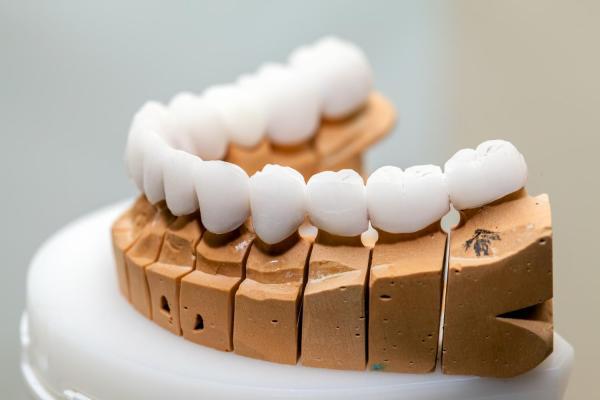Dental crowns are caps that cover a tooth or a dental implant. Dentists often recommend crowns to support broken, weak, or misshapen teeth.
Dental crowns can also be used to cover up a tooth which is very worn down or distinctively discolored. They are also used in conjunction with bridges to strengthen multiple teeth.
The materials of the crowns can vary so that there are several suitable options such as ceramic and metal. Also the most common option is zirconia crowns. Zirconia crowns are made from zirconium dioxide, a very durable type of metal that’s related to titanium and it’s in the category of ceramic crown.
Zirconium crowns are now the most preferred material for dental crowns. Zirconium is a very strong and reliable substance that can tolerate wear and tear for everyday use.

ZIRCONIUM DENTAL CROWN ADVANTAGES
- Strength
- Durability
- Biocompatibility
- Less inflammation
- Same-day procedure
- Natural appearance
- Get result in a single visit
- Modern technology
- Great at hiding tooth damage
- Long-lasting
- Easily modified, reshaped and colored
- Less tooth structure has to be removed
- Aesthetically pleasing
- Highly compatible with the body
Like many other dental procedures, there can be potential disadvantages of getting a zirconia crown. One potential disadvantage of zirconia crown is its opaque appearance, which can cause to look less natural. Also zirconia could cause wear and tear on opposing teeth.
Other types of dental crowns
- Ceramic
- Porcelain
- Metal
- Composite resin
- Combinations of materials, such as porcelain-fused-to-metal (PFM)
PROCESS
There are two main types of procedure options for dental crown. Our dental surgeon shall prepare your tooth suitably and install a temporary crown during the next visit and then insert the permanent crown into your mouth during the second visit or else you may prefer same-day procedure.
Two Visit Procedure
- Taking an X-ray of mouth and prepare tooth for the procedure
- Removing part of the outer layer of your tooth, if necessary
- Makeing an impression of your tooth
- Installing a temporary crown over your tooth
- Having a dental lab make the crown from your impressions
- Second visit after the new crown is made
- Cement the new crown to teeth
Same Day Installation
- Examining your mouth
- Taking digital pictures
- Preparing your tooth for the procedure
- Using the digital scan from the photos to create the crown in the office
- Cement the crown into place
AFTER TREATMENT
TIPS FOR TAKING CARE OF ZIRCONIUM CROWNS
- Brushing and flossing teeth regularly
- Using mouthwash to remove bacteria from teeth, tongue, cheeks and gum
- Clean gum line
- Do gargling
- Practice good dental hygiene
THINGS TO AVOID AFTER CROWNS REPLACEMENT FOR THE FIRST 24 HOURS
- Nuts
- Crunchy vegetables
- Sticky foods
- Cold foods
- Pop
- Gum
- Raisins
- Popcorn
- Ice
- Steak
MOST ASKED QUESTIONS
What to do after getting a permanent crown?
When the permanent dental crown has been placed and the numbing effect of the anesthetic has gone off, patients should be able to eat all foods as normal. However, it is best to avoid sticky foods in the first 24 hours following the procedure to cement the crown to the abutment tooth.
How do you clean under a crown?
Flossing is key to keep the areas around your dental crown clean and clear of food particles that can result in decay and irritation. When you’ve pushed the floss down between your crown and the adjacent tooth, let go of one side and pull the floss through. Pulling or yanking up on the floss can lead your crown to loosen.
Are zirconium crowns good?
Layered zirconia crowns are extremely durable and they have many other benefits for oral health in long term period.
